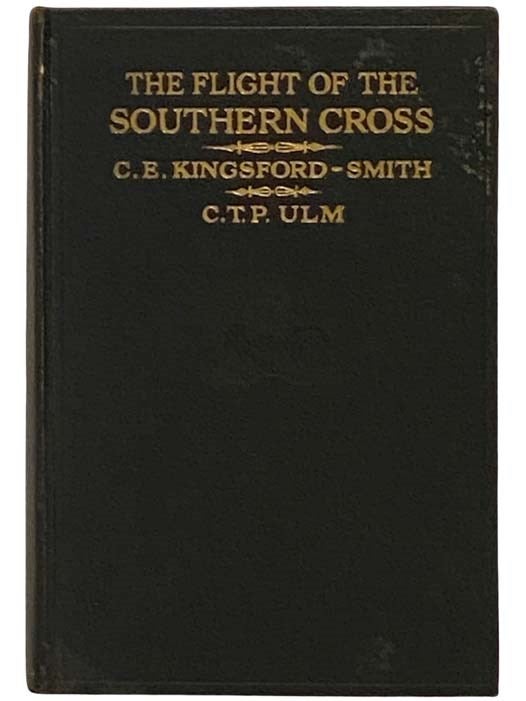
The Flight of the Southern Cross (Illustrated)
New York: National Travel Club, 1929. Hard Cover. Very Good / No Jacket. Item #2328931
No jacket. Boards lightly soiled, front hinge starting.
xii, 295 pp. "Southern Cross is the name of the Fokker F.VIIb/3m trimotor monoplane that in 1928 was flown by Australian aviator Sir Charles Kingsford Smith, Charles Ulm, Harry Lyon and James Warner in the first-ever trans-Pacific flight to Australia from the mainland United States, a distance of about 11,670 kilometres (7,250 mi)." "On 31 May 1928, the crew—Charles Kingsford Smith, Charles Ulm, and Americans Harry Lyon (navigator) and James Warner (radio operator)—took off from Oakland, California, United States. The Southern Cross first stopped for rest and refuelling in Hawaii before setting off for Fiji. This leg of the journey took 34 1/2 hours of flight across open seas before gliding past the Grand Pacific Hotel in Suva, where a large and enthusiastic crowd saw the first aircraft to land in Fiji touch down at Albert Park. The Southern Cross landed at Eagle Farm Airport in Brisbane, Queensland, Australia, on 9 June, where a crowd of 25,000 people were waiting to greet the Southern Cross on its arrival at the airport. The Southern Cross flew on to Sydney the following day (10 June). The aircraft was in constant radio communication with ships and shore during the flight using four transmitters and three receivers powered by a propeller-driven generator attached to the fuselage below the cockpit. Transmitters included one 50 watt short-wave set operating at 33.5 meters wavelength and two 60 watt sets operating at 600 meters, with one 600 meter emergency waterproof set capable of operating eight hours submerged. Receivers, sharing a common audio amplifier, included a short-wave, long-wave and beacon. The first paid commercial messages were sent and received during the flight and a new world record distance for radio was set with a short-wave reception at Bloemfontein, South Africa, the long way around the world at 12,800 miles (20,599.6 km). Direct short-wave aircraft-to-shore communications were maintained with the Pacific Coast until the flight was four hours out of Honolulu which had been monitoring the flight from two hours after departure with a similar reception overlap on the Honolulu to Suva leg. Success on this flight influenced Admiral Byrd to equip his three Antarctic Expedition aircraft with similar equipment."
Price: $30.00
